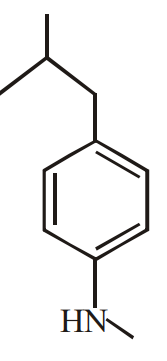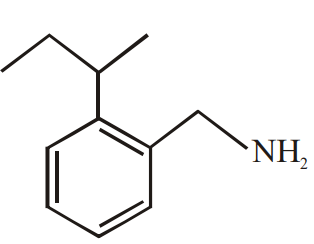Question
An organic acid P (C11H12O2) can easily be oxidized to a dibasic acid which reacts with ethyleneglycol to produce a polymer decron. Upon ozonolysis, P gives an aliphatic ketone as one of the products. P undergoes the following reaction sequences to furnish R via Q. The compound P also undergoes another set of reactions to produce S

The compound S is




The correct answer is: 
Related Questions to study
An organic acid P (C11H12O2) can easily be oxidized to a dibasic acid which reacts with ethyleneglycol to produce a polymer decron Upon ozonolysis, P gives an aliphatic ketone as one of the products P undergoes the following reaction sequences to furnish R via Q The compound P also undergoes another set of reactions to produce S

The compound R is
An organic acid P (C11H12O2) can easily be oxidized to a dibasic acid which reacts with ethyleneglycol to produce a polymer decron Upon ozonolysis, P gives an aliphatic ketone as one of the products P undergoes the following reaction sequences to furnish R via Q The compound P also undergoes another set of reactions to produce S

The compound R is
P and Q are isomers of dicarboxylic acid C4H4O4 . Both decolorize Br2 /H2O. On heating, P forms the cyclic anhydride. Upon treatment with dilute alkaline KMnO4 , P as well as Q could produce one or more than one from S, T and U.

The major product of the following reaction is

P and Q are isomers of dicarboxylic acid C4H4O4 . Both decolorize Br2 /H2O. On heating, P forms the cyclic anhydride. Upon treatment with dilute alkaline KMnO4 , P as well as Q could produce one or more than one from S, T and U.

The major product of the following reaction is

P and Q are isomers of dicarboxylic acid C4H4O4 . Both decolorize Br2 /H2O. On heating, P forms the cyclic anhydride. Upon treatment with dilute alkaline KMnO4 , P as well as Q could produce one or more than one from S, T and U.

In the following reaction sequences V and W are respectively :


P and Q are isomers of dicarboxylic acid C4H4O4 . Both decolorize Br2 /H2O. On heating, P forms the cyclic anhydride. Upon treatment with dilute alkaline KMnO4 , P as well as Q could produce one or more than one from S, T and U.

In the following reaction sequences V and W are respectively :


P and Q are isomers of dicarboxylic acid C4H4O4 . Both decolorize Br2 /H2O. On heating, P forms the cyclic anhydride. Upon treatment with dilute alkaline KMnO4 , P as well as Q could produce one or more than one from S, T and U.

Compounds formed form P and Q are, respectively
P and Q are isomers of dicarboxylic acid C4H4O4 . Both decolorize Br2 /H2O. On heating, P forms the cyclic anhydride. Upon treatment with dilute alkaline KMnO4 , P as well as Q could produce one or more than one from S, T and U.

Compounds formed form P and Q are, respectively
With reference to the scheme given, which of the given statements(s) about T, U, V and W is (are) correct?

With reference to the scheme given, which of the given statements(s) about T, U, V and W is (are) correct?

The major product of the following reaction is :

The major product of the following reaction is :

In the reaction
 the structure of the Product T is :
the structure of the Product T is :
In the reaction
 the structure of the Product T is :
the structure of the Product T is :


under Hofmann conditions will give :


under Hofmann conditions will give :

Which step is rate determining ste

Which step is rate determining ste
 Which reagent (X) is used to convert I to II
Which reagent (X) is used to convert I to II
 Which reagent (X) is used to convert I to II
Which reagent (X) is used to convert I to II
The increasing order of basicity of the following compounds is :
a) 
b) 
c) 
d) 
The increasing order of basicity of the following compounds is :
a) 
b) 
c) 
d) 
The major product obtained in the following reaction is

The major product obtained in the following reaction is

The structural formula of hypo phosphorous acid is
The structural formula of hypo phosphorous acid is
If  represents a pair of lines then λ=
represents a pair of lines then λ=
Therefore, the value of is 2.
If  represents a pair of lines then λ=
represents a pair of lines then λ=
Therefore, the value of is 2.
The points  and (82, 30) are vertices of
and (82, 30) are vertices of
Here we used the concept of slope and slope of a line where we found the slope of the line of side off triangle and found that the slopes of th e lines are same and hence A, B and C were collinear. So it cannot form any triangle and its a straight line on which all the three points are lying.
The points  and (82, 30) are vertices of
and (82, 30) are vertices of
Here we used the concept of slope and slope of a line where we found the slope of the line of side off triangle and found that the slopes of th e lines are same and hence A, B and C were collinear. So it cannot form any triangle and its a straight line on which all the three points are lying.



